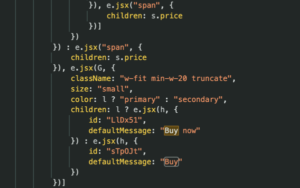Unexpected Victor in Google Ad Monopoly Decision

Google Ad Monopoly Ruling: Who Came Out on Top?
Background of the Ruling
Recently, a significant ruling was made regarding Google’s dominance in the online advertising sector. The case focused on allegations that Google had established a monopoly over digital ads, which leads to concerns among competitors and regulatory bodies.
Key Issues Underlying the Case
- Market Control: Google is accused of controlling a vast majority of the online advertising market, limiting the opportunities for small and medium-sized businesses.
- Anti-competitive Practices: Critics argue that Google’s practices create barriers for new entrants in advertising, keeping competition at bay and allowing the tech giant to maintain high profit margins.
The Surprising Outcomes
Who Was Most Affected?
While many expected traditional competitors to benefit from the ruling, the outcome revealed unexpected results:
Facebook (Meta): Surprisingly, Meta emerged as one of the notable beneficiaries of the ruling. With Google’s ad practices under scrutiny, there may be more opportunities for platforms like Facebook to attract advertisers looking for alternatives.
- Smaller Ad Platforms: In addition, smaller companies in the advertising sector might find themselves in a better position to compete. The ruling could encourage more players to enter the market, fostering innovation and variety.
Regulatory Repercussions
Government regulators are closely monitoring the fallout from this ruling. They are likely to impose new guidelines and scrutiny on Google’s practices, further balancing the advertising landscape.
Implications for Businesses and Advertisers
Changes in Advertising Strategies
Businesses that rely heavily on Google Ads might need to rethink their strategies in light of the ruling. Here are some potential changes they might consider:
- Diversification: Moving away from a sole reliance on Google for online visibility and considering alternative platforms to reach their audience.
- Branding: Focusing on brand building through emerging social media platforms like TikTok or Pinterest to connect with consumers directly.
- Partnerships: Collaborating with smaller and more dynamic advertising platforms may offer new avenues for exposure.
Impact on Consumer Choices
With increased competition in the advertising space, consumers might benefit from more variety in the products and services being advertised to them. As advertisers explore different channels, consumers could see a mix of messages that are tailored more accurately to their preferences and interests.
Future Prospects for the Advertising Market
Overall Market Growth
The ruling is expected to create more opportunities for growth across the advertising sector. Increased competition can fuel innovation, leading to new advertising technologies and strategies that benefit both businesses and consumers.
Key Takeaways
- Increased Competition: The ruling is likely to open doors for various players in the ad market.
- Shift in Focus Among Advertisers: Brands may begin exploring alternative platforms more aggressively.
- Consumer Benefits: A more competitive landscape could lead to better advertising experiences for consumers.
Overall, the ruling against Google’s monopolistic practices represents a critical moment in the digital advertising landscape. It sets the stage for potential shifts that could redefine how businesses, small and large, approach online advertising in the future. While there are still many uncertainties surrounding the long-term effects of this ruling, one thing is clear: the advertising world is about to become more dynamic and competitive.





